| Simple
Smooth-edged Leaves |
|
Single leaves with smooth edges, attached singly to a stalk.
Coastal Plain Willow
Flowering Dogwood
Eastern Redbud
Common Persimmon
Pawpaw
|
| Coastal Plain
Willow |
|
Willow family. Salix Caroliniana
Common name: Southern Willow
The simple smooth-edged narrow leaves are 2-4" long, green
above and whitish underneath.
|
|
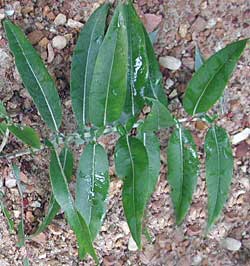 |
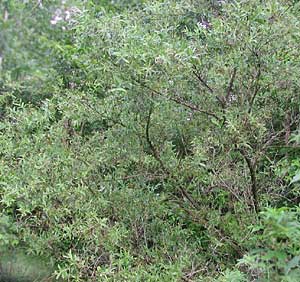 |
| Coastal Plain Willow grows where it's very moist,
on sand and gravel bars and stream banks.
It will grow to 30' high. This one is about 25' long. It
spreads along a gravel bar by Bryant Creek.
|
|
| Flowering
Dogwood |
| Dogwood family. Cornus florida
The shiny simple smooth-edged leaves are 2.5-5" long. In
this picture the stalks and twigs are green, but they turn
reddish in the fall.
|
|
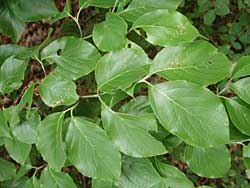 |
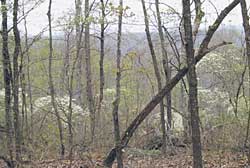 |
| Flowering dogwoods are understory trees. They
bloom before being shaded by taller trees. Their blossoms seem
to float through the woods in April, before trees have begun
to leaf out. |
|
| The real flowers are crowded into the center.
Four white petals, called bracts, make them appear showy white. |
|
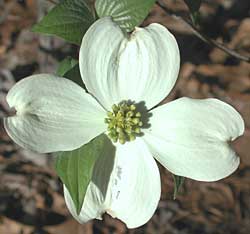 |
| Eastern
Redbud |
Legume family.
Cercis canadensis
Common name: judas-tree.
Redbuds, understory trees, bloom throughout the woods at
the start of April. Flowers cover the twigs and smaller branches.
|
|
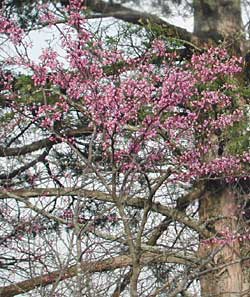 |
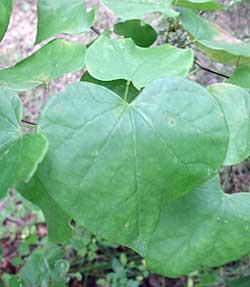 |
| Their simple heart-shaped leaves are 2.5" to
4.5" long with smooth edges. |
|
| Pods, carrying bean-shaped seeds, grow from their
twigs and branches. |
|
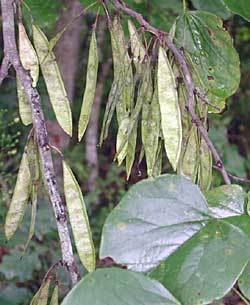 |
| Common
Persimmon |
Ebony family.
Dyospyros virginiana
These leaves are from 2" to 6" long. They are oval,
smooth around the edges, thick and shiny. Among them you can
see a green persimmon. It will ripen in the fall and taste
best after the first frost.
|
|
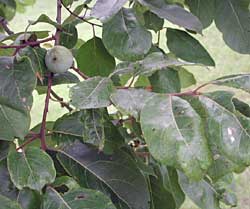 |
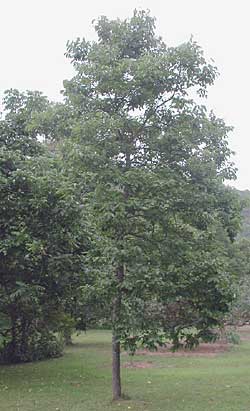 |
| This persimmon is about 30 feet high. They
will grow to 70 feet.
They grow all through the river valley, along roads, and
in old fields, like this one.
|
|
| Pawpaw |
Annona (Custard Apple) family.
Asimina triloba
Pawpaws are understory trees. You can find them by looking
for their big floppy leaves. In late summer, check carefully
for their delicious fruits.
|
|
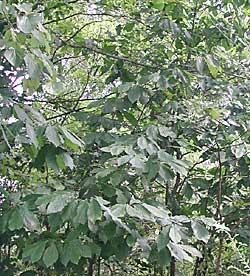 |
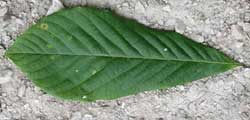 |
Pawpaw leaves are large
(7-10"), simple, smooth-edged, and get broader toward the tip.
More about pawpaws:
The Pawpaw Patch
|
|
| |
|
| |
Sources: National Audubon Society Field Guide to Trees, Eastern
Region,by Elbert L. Little, 2000, Alfred A. Knopf, New York.
Flora of Missouri,by Julian A.Steyermark, Iowa State University
Press, Ames, Iowa, 1981. Photos and text by Peter Callaway.
|
| |
|











